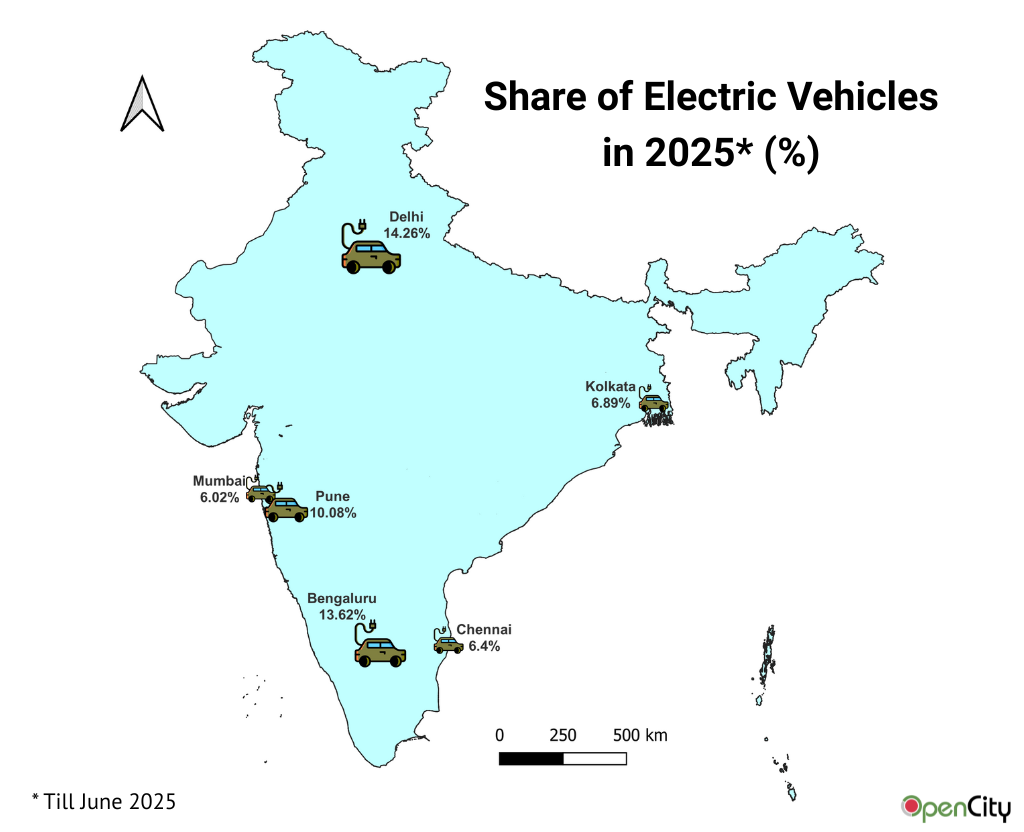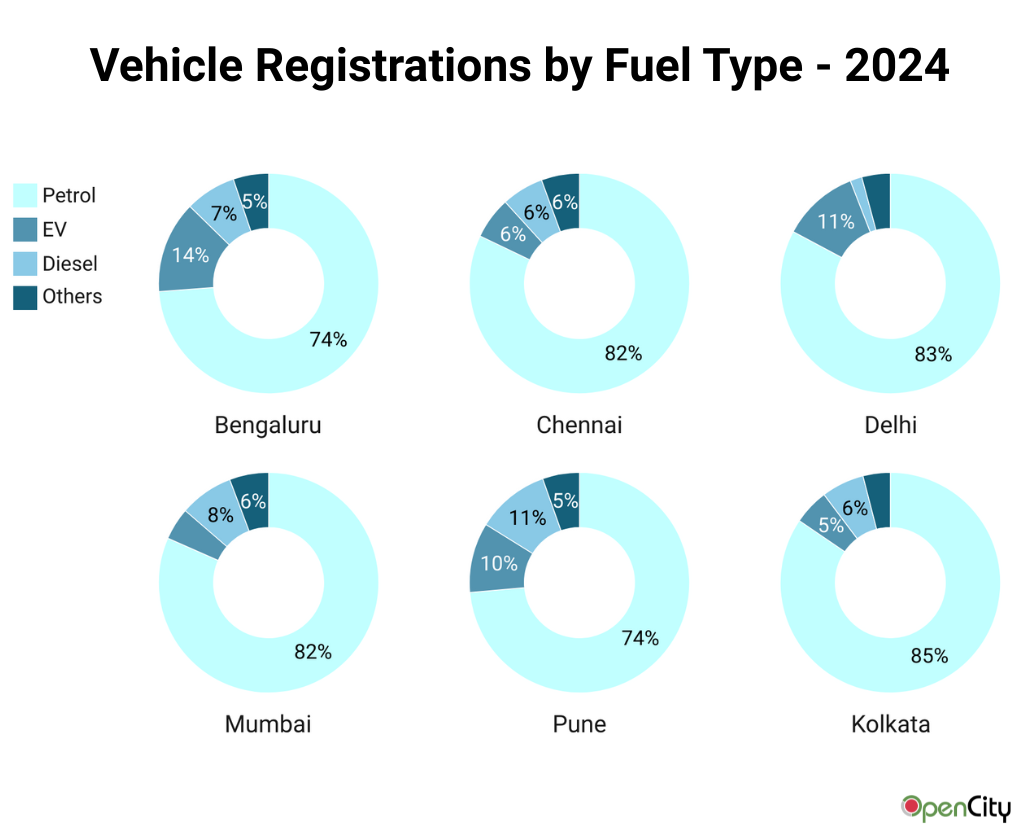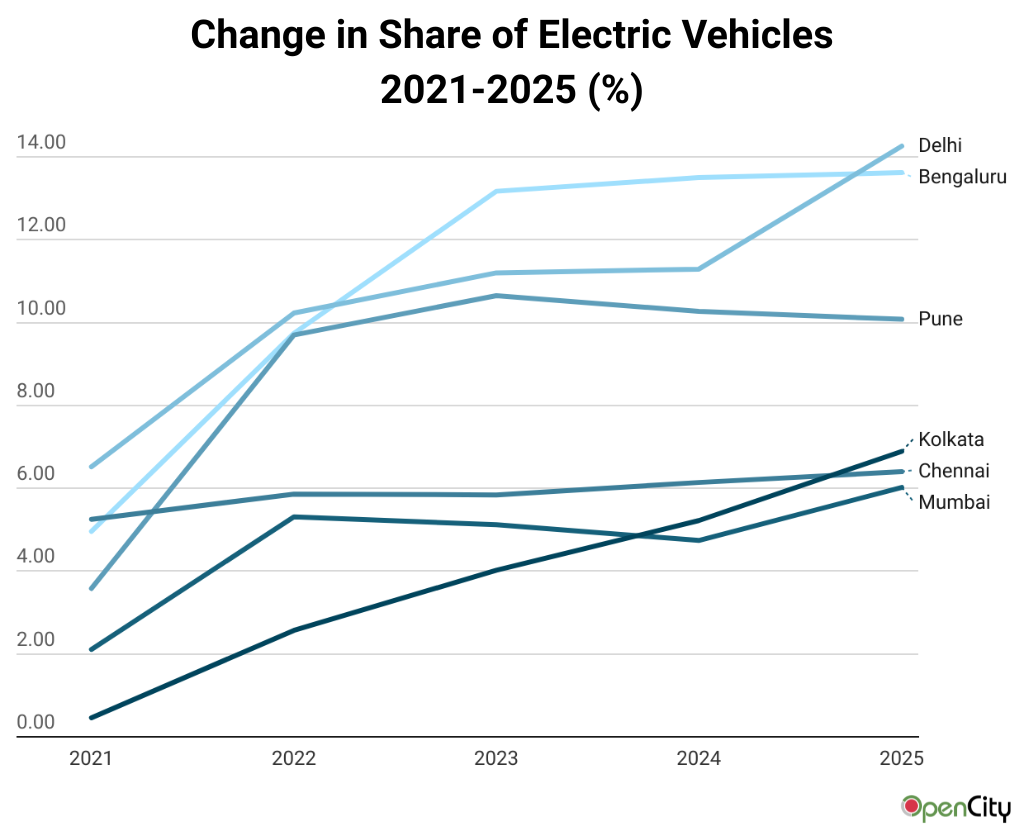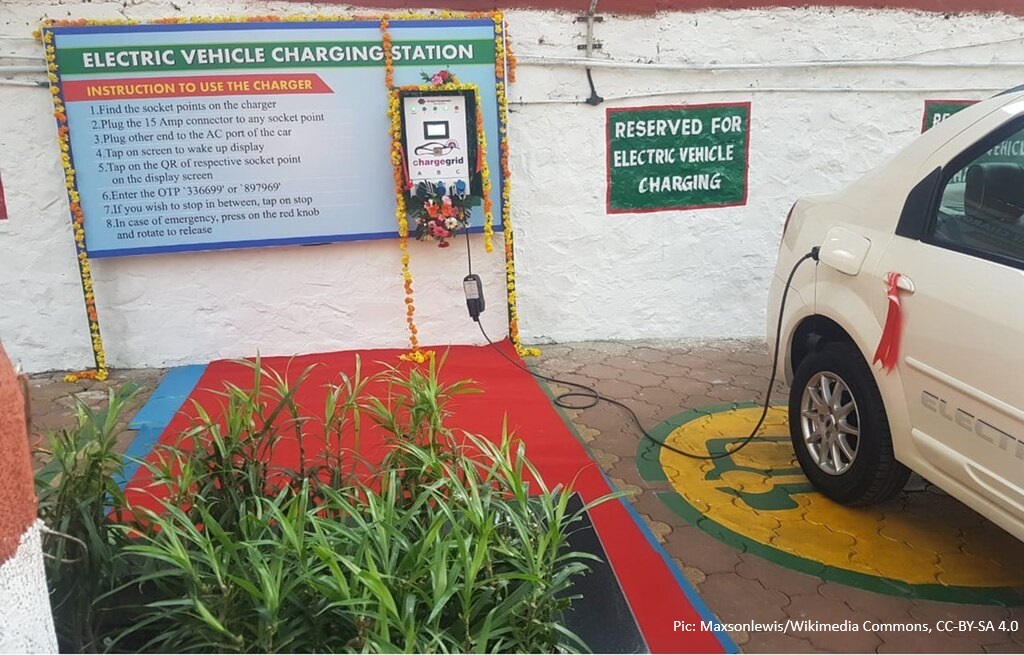The Government of India has set a target to electrify a large part of the transportation sector by 2030. The intent is to have 30% of all cars, 70% of all commercial vehicles and 80% of all two-wheelers sold from 2030 to be electric vehicles.
Given that 2030 is only five years away, the share of electric vehicles in our fleets should be ramping up rapidly. Unfortunately, that does not seem to be the case.
Challenges like accessing charging infrastructure, both at home and on the road, and access to rare-earth minerals from China have dogged the EV market.
When it comes to vehicles and trends in sales, our big cities lead the way in how the market moves. In this analysis, we look at the level of penetration of electric vehicles in India’s large cities using the Parivahan data from 2021 to 2025 (till June).
Unfortunately, the data is not granular enough to look at how many of these electric vehicles are two-wheelers, four-wheelers or transport vehicles.
Bengaluru and Delhi lead the way
Bengaluru and Delhi are the cities with the highest number of vehicles. Given the extremely high dependence on private vehicles, it is natural that the shift to EV is happening faster in these cities compared to the others.
In the first six months of 2025, close to one in seven vehicles registered in these cities were electric vehicles. This does not include hybrids, but only those that are classified as Electric(BOV) where BOV stands for Battery Operated Vehicles, and Pure EV by the RTOs.
Among the rest of the major cities, only Pune has a share in two-digits while Mumbai and Chennai bring up the rear.

Petrol still king
Across all cities, petrol continues to be the main fuel for vehicles sold with the total share of petrol and diesel continuing to be over 80%. The decline of diesel after it got phased out by many auto manufacturers has been swift.
While in Bengaluru, the number of EVs is twice that of diesel, in Delhi the difference is significant. Policies mandating move to CNG have meant that in Delhi diesel vehicles account for less than 2% of the fleet. While Pune has a high percentage of EVs, like other cities, it is almost the same as Diesel.
It can be safely conjectured that EVs are now at the same level as diesel vehicles across most cities when it comes to total vehicles. But the difference in type of vehicle cannot be ignored. While EVs are likely to penetrate into the two-wheeler market eating into the share of petrol vehicles, their share in heavier transport vehicles, except with public buses, is almost zero. The next generation of EVs will have to take on this category to make gains.

Growth in EVs
While the current numbers might paint a less encouraging tone, the last five years have seen a significant change in the share of EVs in all cities. Compared to 2021, every large city, except Chennai, has more than doubled its share of EVs.
It is interesting to note that Chennai and Bengaluru were at the same level of EV absorption in 2021. Bengaluru has since tripled its share of EVs, while the growth in Chennai has remained flat.
The sudden spurts in cities like Bengaluru, Delhi, Pune and Mumbai suggest government intervention with schemes encouraging EV adoption. Delhi has seen two spurts, at 2022 and then again in 2025.
In Bengaluru the share increased till 2023 and has since remained flat. The Gruha Jyothi free 200 units scheme was launched in July 2023, and while it could have been behind the push to EV in 2023, the gains seem to have flattened out since.

Governments in most of these cities are offering schemes and rebates for electric vehicles. Across all states there is a 100% rebate on road tax. While Karnataka has withdrawn the discount for vehicles costing above Rs. 25 Lakh, this should affect only a small fraction of EV sales.
In the case of Delhi, apart from existing subsidies and tax rebates, there is also a push to ban and not permit other types of vehicles like non-electric autorickshaws, a carrot and stick approach to increase EV penetration.
While providing subsidies and waiving road tax might be a good approach, increasing penetration of EVs in public and intermediate public transport might be a better approach. In Bengaluru, BMTC is transforming its fleet to electric using the Government of India’s FAME subsidy scheme and has set an ambitious target of transforming its entire fleet to electric by 2030.
However, there is little being done in terms of encouraging EVs in auto-rickshaws and taxis in most cities. Given that these vehicles tend to spend most of their lifetime within the city, a push in the direction can change how our cities commute, giving us significant gains in terms of air quality and noise.

